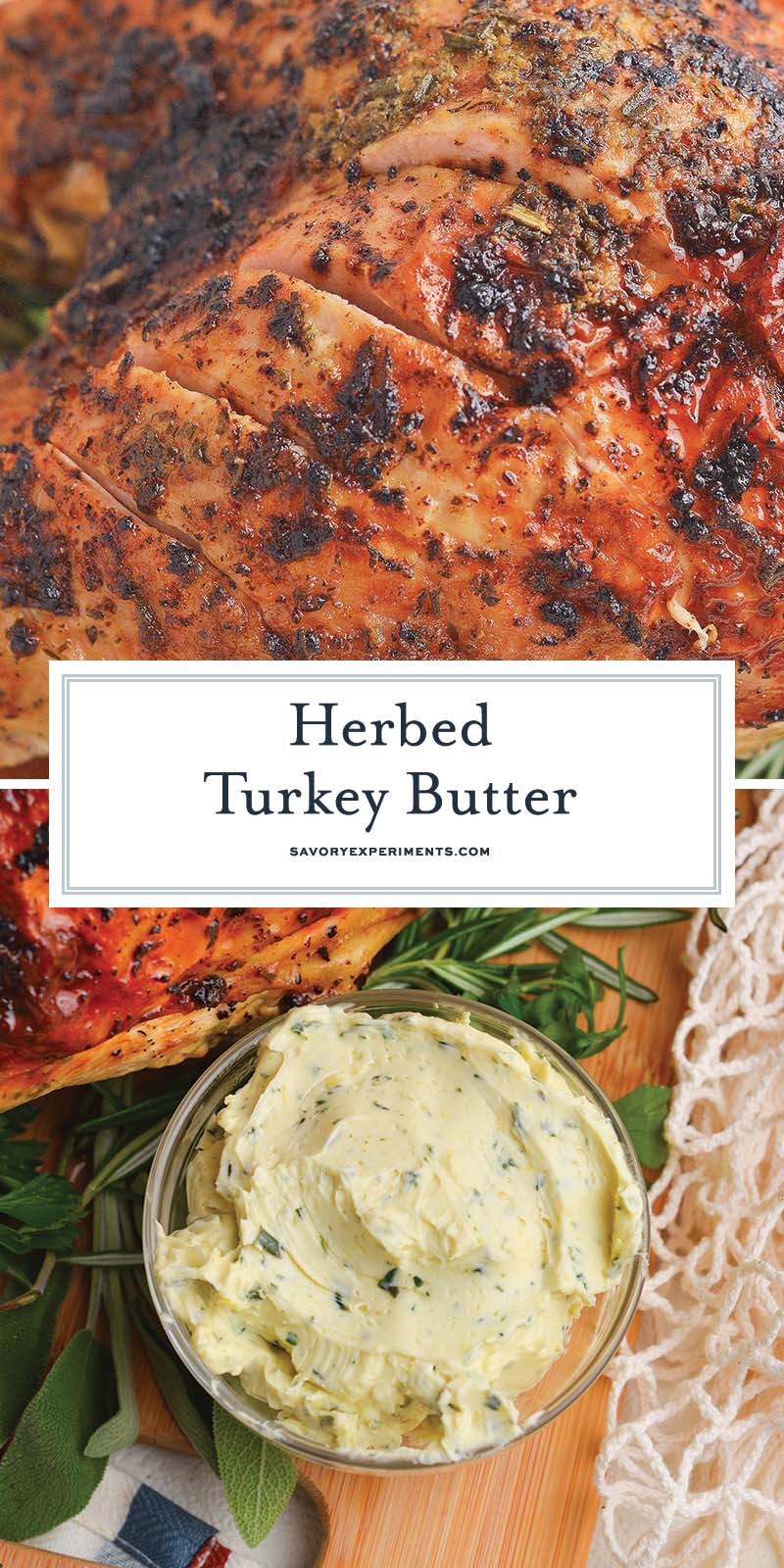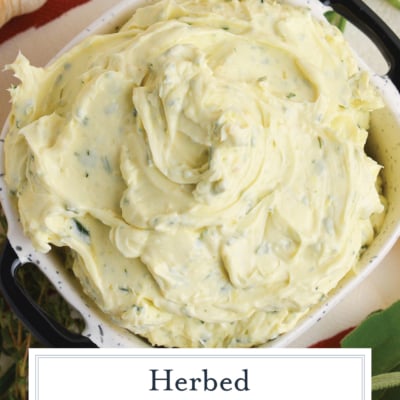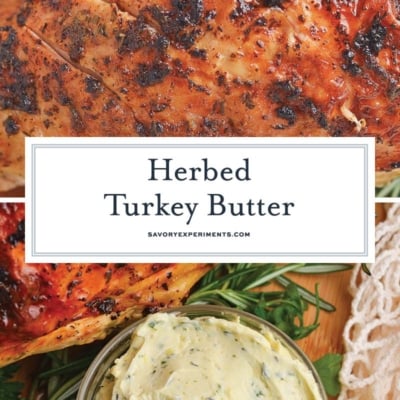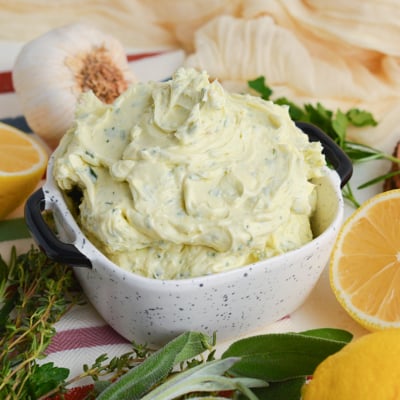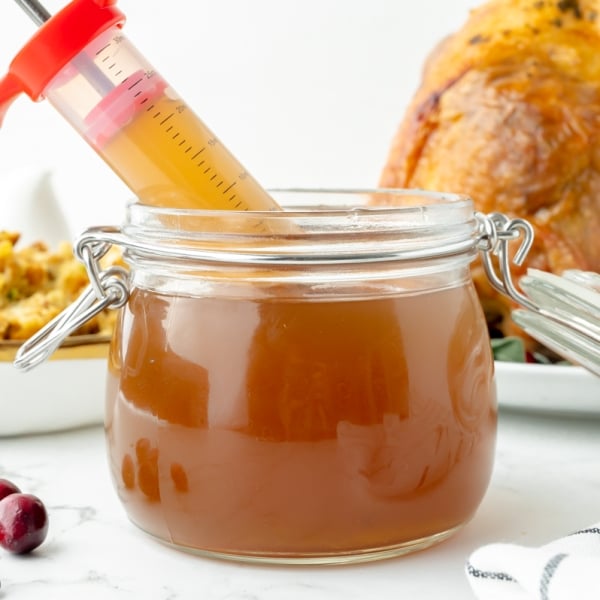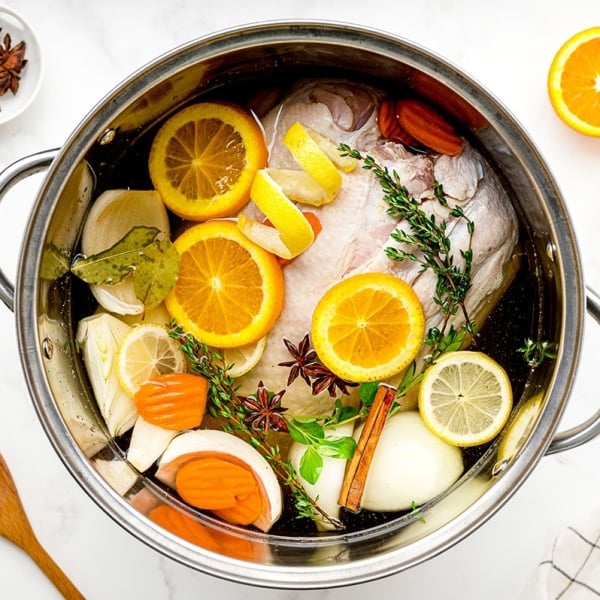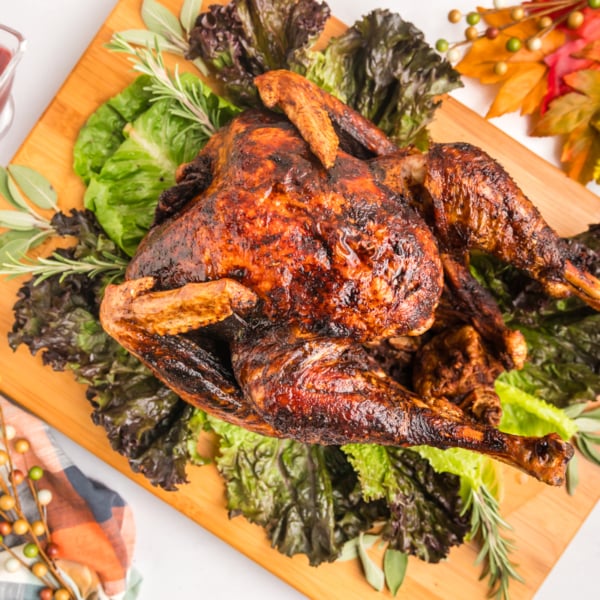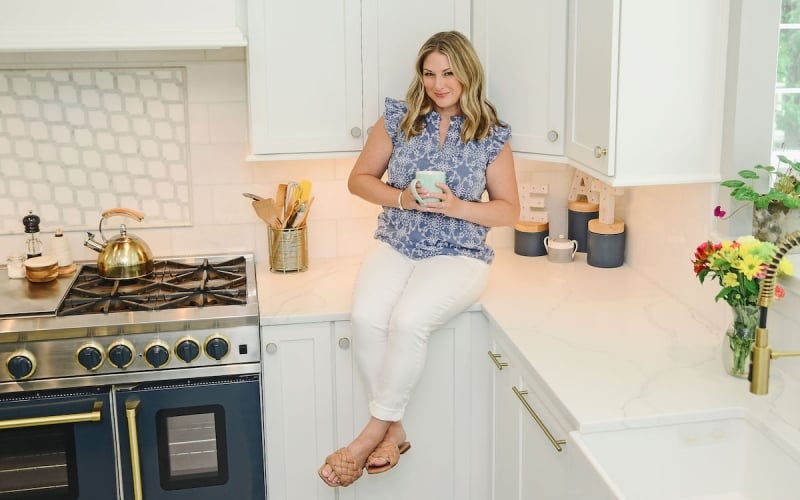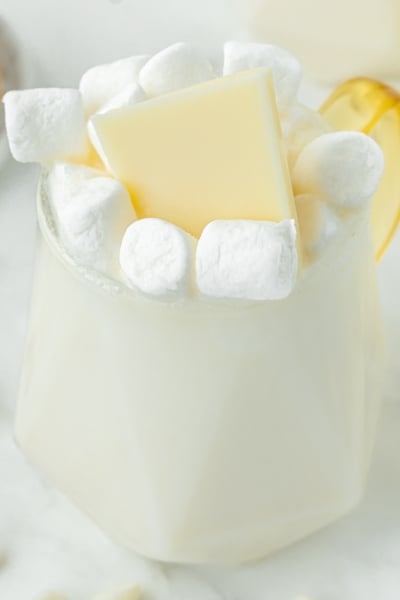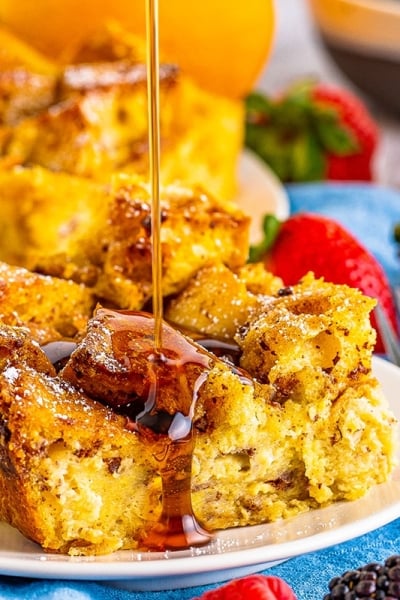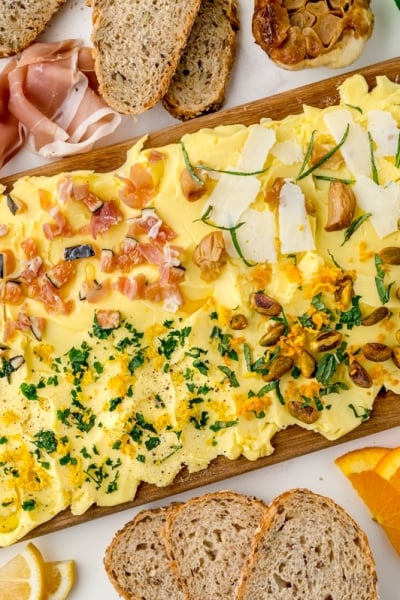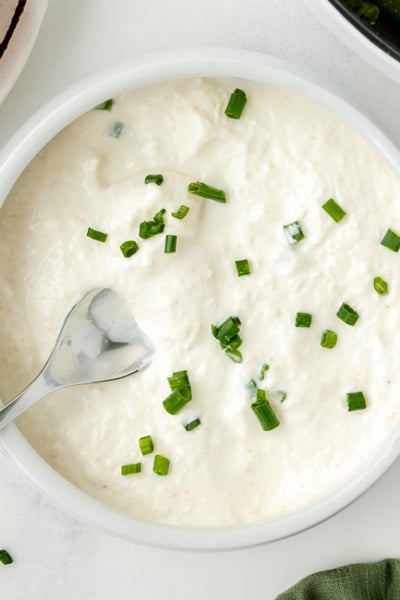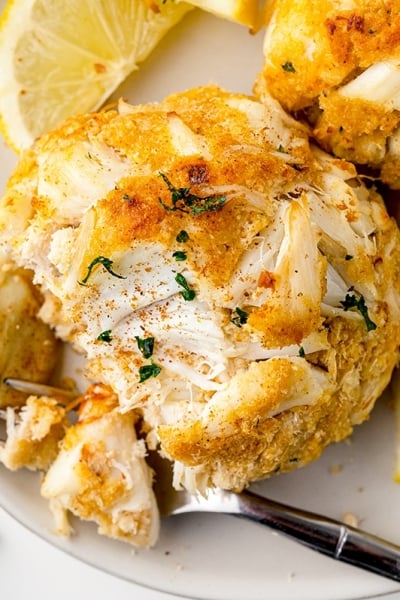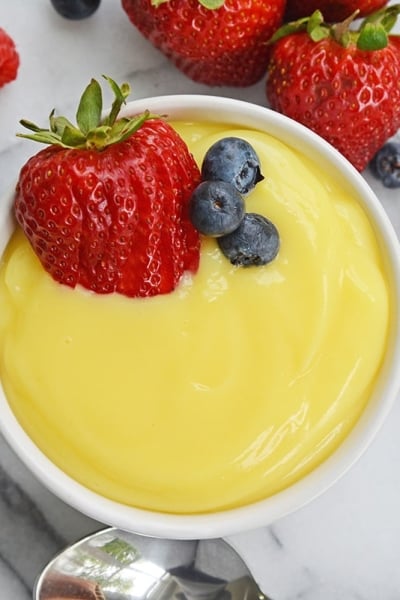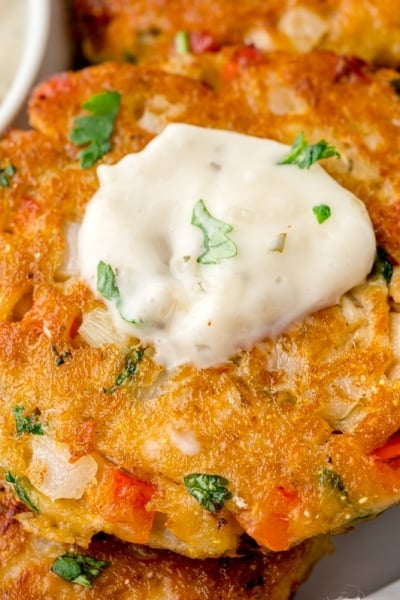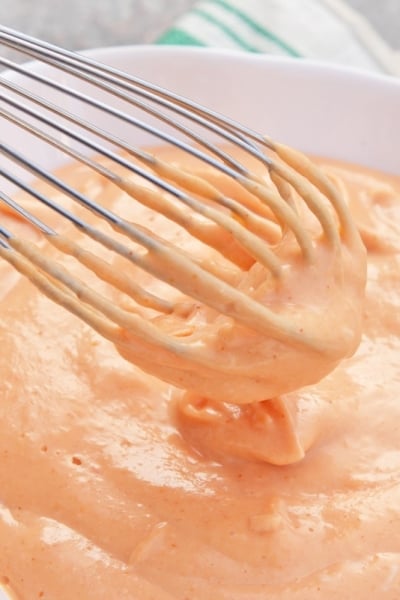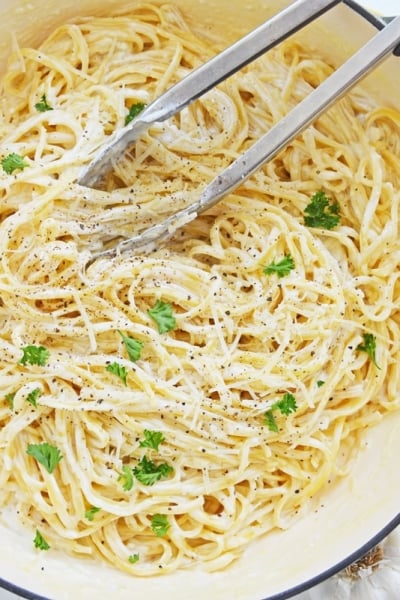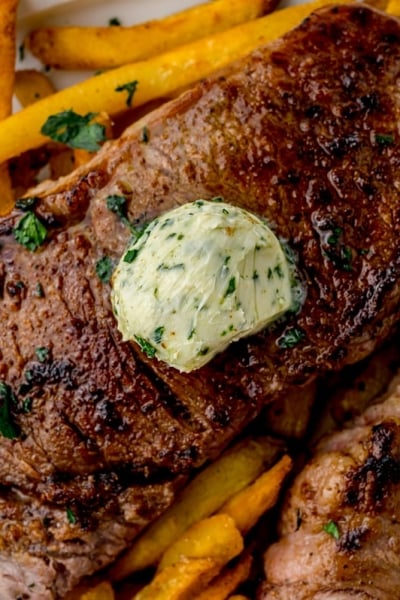While any compound butter can be used on turkey, this Turkey Butter Recipe was developed specifically for turkeys. Subtle herbs compliment natural turkey flavors while the butter helps to moisten, flavor and brown the bird.
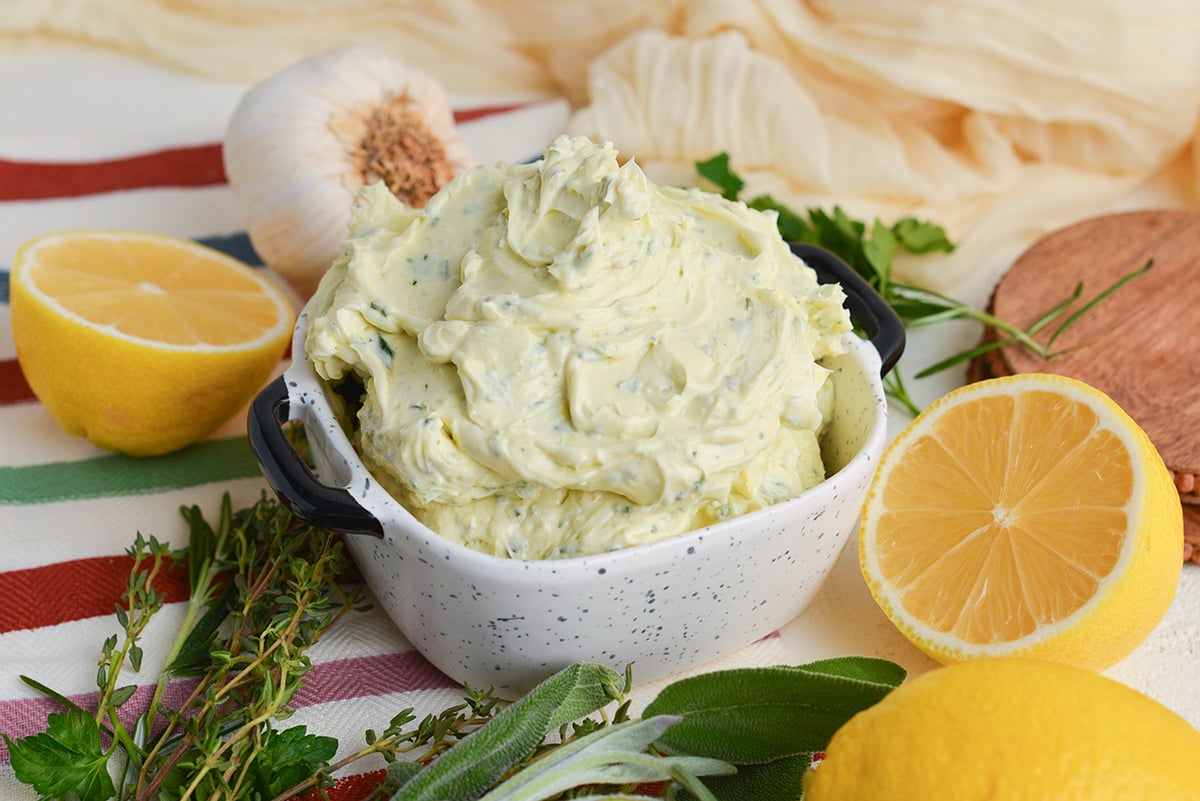
Why this is The Best!
Whether with a brine, dry rub, injection or turkey butter, everyone makes a turkey a little differently. But here’s why this turkey butter is a favorite.
- Spreadability– This butter is emulsified using olive oil and Dijon mustard, which both offer flavor but also an easier time spreading the butter evenly (as long as the skin is nice and dry).
- Browning & Crispy Skin– Butter is a fat that will keep meats moist and flavorful, but assist the skin in being crispy and golden brown.
- Make-Ahead = More Flavor– This flavored butter is actually better when you make it ahead of time. You know when butter takes on a weird in flavor in the fridge? Well, if you flavor it with aromatics, it will also absorb those flavors more deeply and fully. Make it ahead of time and even freeze it!
- More Than Turkey– While I made this specifically for a fool-proof Thanksgiving turkey, it can be used for any dish that benefits from a good butter like bread, chicken, pasta, to finish steaks, roasted veggies and more.
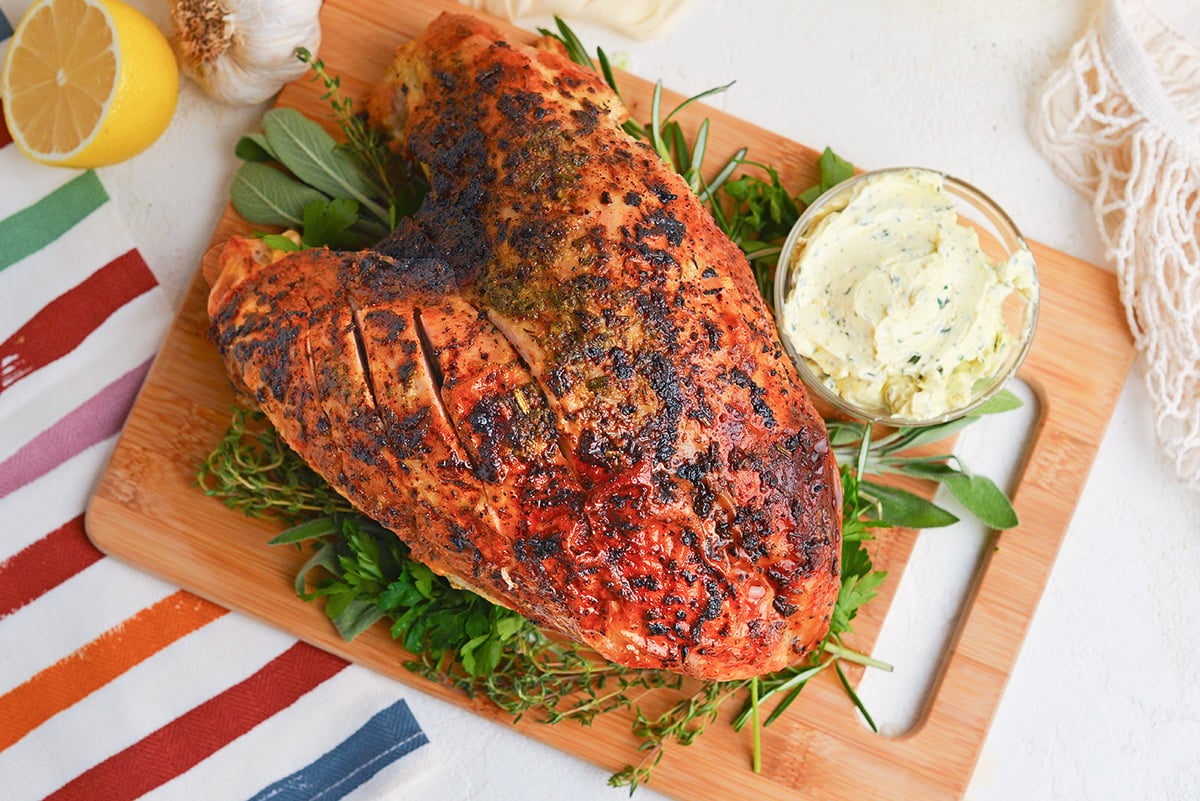
What You’ll Need
With lots of fresh herbs and a few pantry ingredients, you’re well on your way to making this easy turkey butter. A full list of ingredients with measurements for this recipe is available in the printable recipe card below.
- Butter – The main ingredient of the whole recipe! Make sure to use unsalted butter, as we will be adding our own amount of salt and seasonings. Room temperature butter, not melted, is easiest to work with.
- Fresh garlic
- Fresh lemon
- Extra virgin olive oil
- Fresh thyme leaves
- Fresh sage
- Fresh flat parsley
- Dijon mustard
- Fresh rosemary
- Coarse sea salt
- Ground white pepper
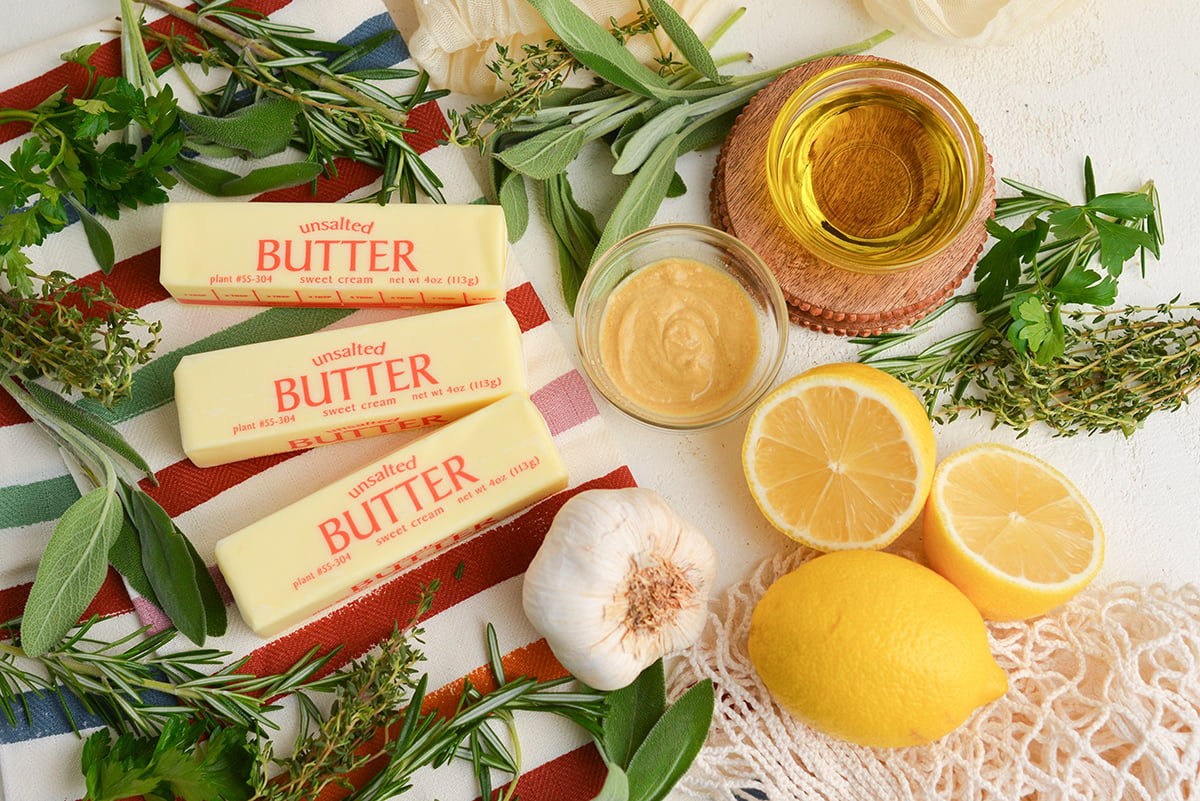
Tips for Buttering a Turkey
With this turkey butter recipe and these tips, you will be asked to host Thanksgiving every year!
- Pat the turkey DRY. The skin will brown more evenly and get crispier the drier the skin. If you’ve dry brined or wet brined, you’ll still want to rinse and pat dry using paper towels or let is sit, uncovered, in the fridge to get super dry skin. This will also help the butter spread and stick more easily.
- Test the Flavors. Before you smother the whole turkey, taste test the butter for seasonings. Just slather some on a piece of bread or a cracker and make the adjustments before you’ve covered the whole turkey. See the commonly asked questions below for answers on how to correct seasoning.
- Under skin and Over Skin– Spread the majority of the butter under the skin of the turkey. Loosen it with your fingers and rub it under to lock in the flavors and help keep it juicy and tender. Over the skin will likely melt off, but the leftover fats will brown and crisp. The drippings will be lightly seasoned and perfect for making turkey gravy.
- Even Under the Skin– Some areas are small, but don’t worry! For small areas, use a small offset spatula or put some butter in a small plastic snack bag, snip the corner and squirt it in. Also remember that butter melts and will likely seep into all the nooks and crannies naturally.
- Room Temperature Butter– Not only is room temp butter easier to mix, it will also prevent the skin from tearing and keep your bird looking beautiful.
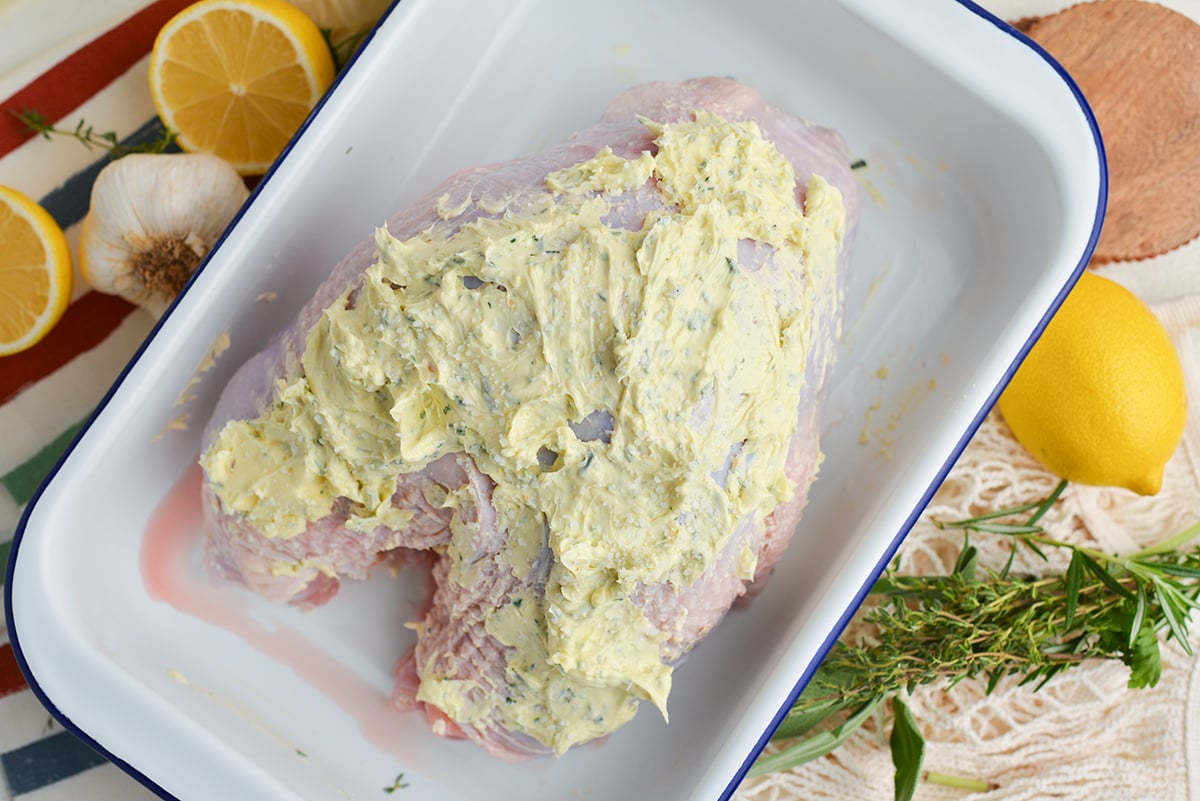
Variations
There are plenty of ways to change up this turkey butter recipe. Here are a few suggestions.
- Citrus – Instead of lemon juice, try swapping it for orange or lime juice for a different flavor profile.
- Sweetener – Add 1 tablespoon of brown sugar, maple syrup or agave nectar for a sweetener and to enhance browning.
- Seasonings – Try adding crushed fennel seeds for a sweet and earthy like flavor profile.
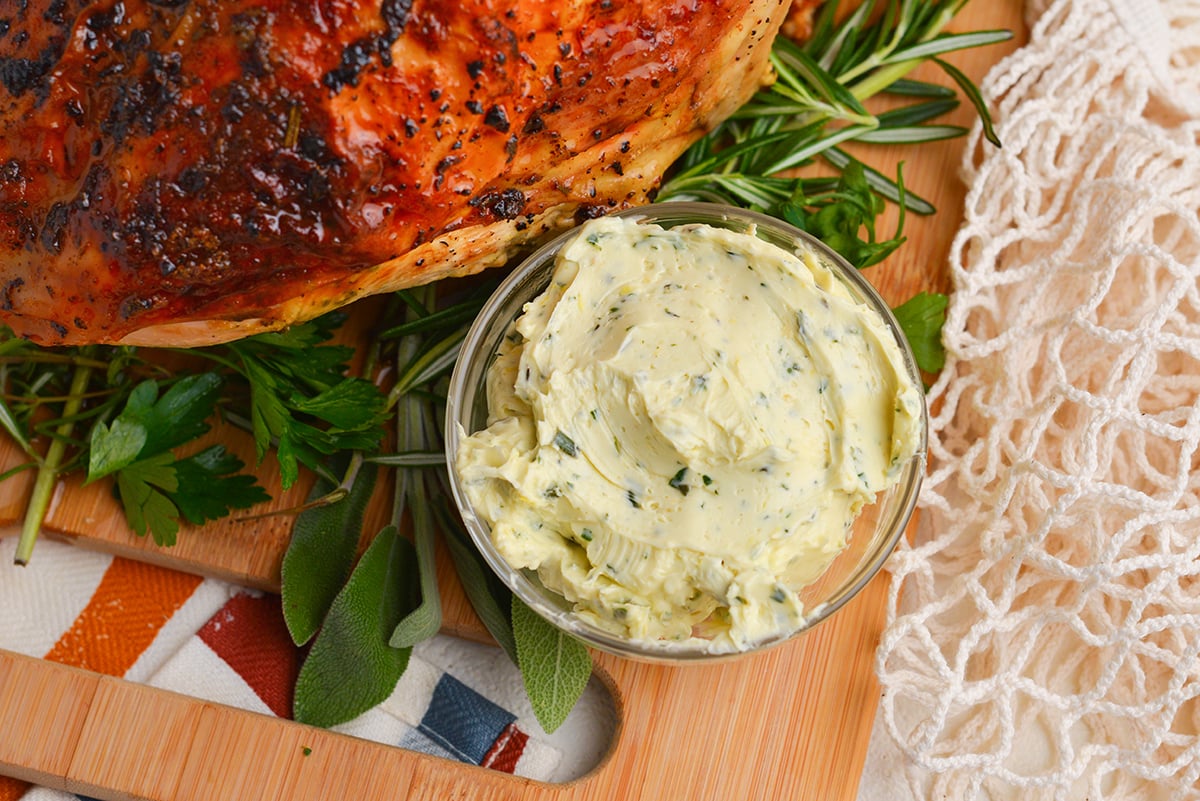
Commonly Asked Questions
The only solution to over salted butter is to add more butter. This is why we suggest using unsalted butter.
Add more aromatics and/or garlic. Sometimes these have more or less flavor, but when you do the taste test, don’t be afraid to add more of the flavors you love!
Yes! You’ll want to rinse the bird from any brine anyhow, then pat it dry and feel free to rub it down with butter. I would, however, suggest reducing or omitting the salt from the butter since both dry and wet brines tend to be pretty salty.
In most cases, 1 tablespoon per pound should be good, but you can scale back smaller for turkey breasts or smaller turkeys because there is naturally less surface space.
Best Turkey Butter Recipe
Equipment
Ingredients
- 3-4 cloves fresh garlic , coarsely chopped
- 1 lemon , zested and juiced
- 1 tablespoon fresh sage , roughly chopped
- 1 tablespoon fresh flat parsley , roughly chopped
- 1 tablespoon fresh rosemary , roughly chopped
- 1 tablespoon extra virgin olive oil
- 1 tablespoons Dijon mustard
- 2 teaspoons fresh thyme leaves
- 1 teaspoon coarse sea salt
- 1 teaspoon ground white pepper
- 1 1/2 cups unsalted butter , room temperature
Instructions
- In the food processor, combine the chopped 3-4 cloves fresh garlic, 1 lemon zested and juiced, chopped 1 tablespoon fresh sage, 1 tablespoon fresh flat parsley, 1 tablespoon fresh rosemary, 1 tablespoon extra virgin olive oil, 1 tablespoons Dijon mustard, 2 teaspoons fresh thyme leaves, 1 teaspoon coarse sea salt, and 1 teaspoon ground white pepper. Pulse until the herbs start to chop further.
- Add the room temperature and chopped 1 1/2 cups unsalted butter to the food processor and blend until smooth, scraping down the sides as needed.
- Scrape out of the food processor and use immediately or cover and chill until to use.
- If you've tried this recipe, come back and let us know how it was in the comments or star ratings.
Notes
- Whole turkeys (8-14 lb): ~1 Tbsp per pound
- Small birds/parts (breasts, 2-7 lb): ~1–1¼ Tbsp per pound (less mass → more surface area to cover)
- Large birds (15-20 lb+): ~¾–1 Tbsp per pound (you don’t need as much per lb)
Roast a Turkey Breast (bone-in)
- Preheat: 350°F. Rack in a roasting pan.
- Position: Breast-side up (skin up).
- Season: Pat dry (the butter will stick better) and rub with compound butter under the skin and over the skin.
-
Roast time: ~18–22 minutes per pound.
Start checking early. - Target temps: Pull when breast hits 160°F; carryover will reach 165°F.
- Rest: 15–20 minutes before slicing (juicier slices).
Roast a Whole Turkey (unstuffed)
- Preheat: 325°F. Rack in a roasting pan.
- Position: Breast-side up (legs/thighs down, cavity opening facing you).
- Season: Pat dry (the butter will stick better) and rub butter under the skin and over the skin.
-
Roast time: ~13–15 minutes per pound (unstuffed).
Stuffed turkeys run ~15–17 min/lb; I recommend dressing baked separately for food safety + crispier skin. - Target temps: Pull when breast is 160–165°F and thigh is 170–175°F using an instant read digital thermometer.
- Rest: 30 minutes before carving (tent loosely with foil) to redistribute juices.
- Rotate the pan once halfway through for even browning.
- If the breast is getting too dark before the thighs are done, tent the breast with foil.
Nutrition
More Juicy Turkey Recipes
From brines to injections and even a rub, these are our favorite Thanksgiving turkey recipes.
